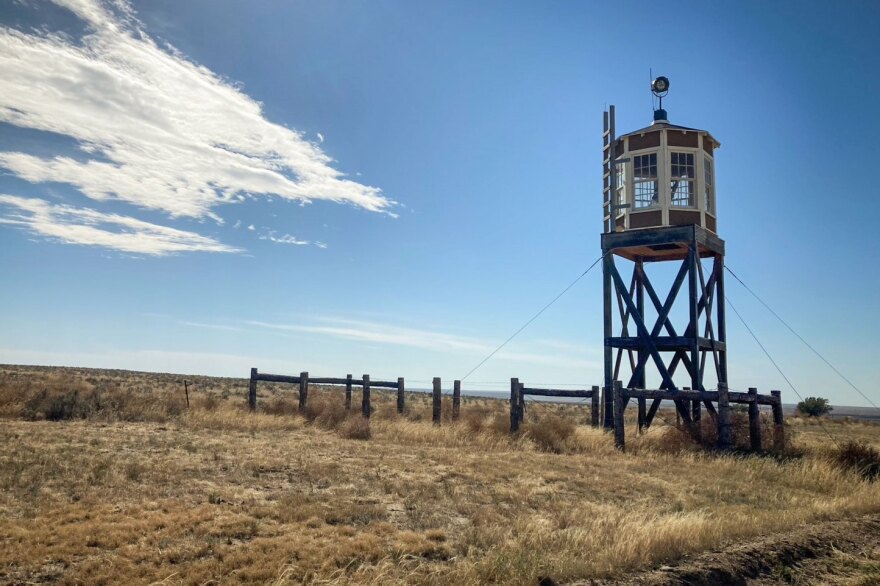If the World War II Japanese concenration camp site gets historic desgination, the National Park Service would take over management. There is support for the move from people who were imprisoned there and their descendants.
Located in Colorado’s southeastern corner, Amache is a dry and desolate place.
Tumbleweeds and the occasional guard tower line the grid of dirt roads that made up the bones of the internment camp that once stood here. While some buildings have been restored, all that remains of others, like the elementary school, are foundations overgrown by weeds.
During World War II, more than 7,000 Japanese-Americans and non-citizen Japanese were relocated from the West Coast and incarcerated at Amache, also known as the Granada Relocation Center. It’s this history that Reps. Ken Buck and Joe Neguse want to preserve.
The Republican and Democrat introduced a bill Wednesday, April 14, to designate Amache a National Historic Site.
Amache was one of 10 internment camps for ethnic Japanese during the war. Manzanar in California and Minidoka in Idaho are the two that have so far received National Historic Site status.
“It is so important that we remember the injustices committed against Japanese Americans,” said Buck, who represents the area. “The nation is better today because of the lessons we have learned from our past. Preserving Amache serves as one of those hard lessons for the people of Eastern Colorado and the rest of our nation.”
The lessons of this dark time in American history are why Neguse thinks this designation is important. He said it will provide for “healing and honor to those that lived it. It is our hope that preservation of this site will provide reconciliation for our communities and for the nation.”
The site is currently maintained by the Amache Preservation Society and became a National Historic Landmark in 2006. John Hopper, principal of Granada High School, established the society and students at his school volunteer at Amache — giving tours, writing funding grants, maintaining the cemetery for those who died in the camp and more.

If Amache becomes a historic site, the National Park Service would take over management, giving it and the area a possible economic and tourism boost. It would also grant the Interior Secretary the authority to acquire the land, currently owned by the town of Granada, by donation or purchase.
“The Amache Preservation Society has always wanted to do what was best for the Japanese American families that had to endure Amache,” Cooper said. “It is for this reason that we feel that it needs to become a part of the National Park System.”
There is support for the designation from those who were imprisoned there, like former Rep. Mike Honda of California, and their descendants. Three generations of Mitch Homma’s family were detained “behind barbed wire at Amache.”
“Amache is a story we cannot forget — with the Amache National Historic Site Act we have a chance to preserve, honor, and protect it — because it is very much a story that is alive today,” Homma said.
The first step for the Amache National Historic Site Act will be a hearing. Neguse chairs the National Parks, Forests, and Public Lands subcommittee in the Natural Resources Committee, where the hearing would take place. The bill is slated for a hearing on April 21.
In the last Congress, a bill sponsored by Buck, Sen. Michael Bennet and former Sen. Cory Gardner, to study Amache to be included as part of the National Park system was passed. The Department of the Interior is currently in the comment period of the study, which takes approximately 3 years to complete.
Buck and Neguse’s bill, if passed, would jump ahead of the study. Colorado has two other National Historic Sites: Bent’s Old Fort designated in 1960 and the site of the Sand Creek Massacre, which was designated in 2000, and opened in 2007.
- - -
Mark Duggan provided online production of this story for KSUT.
This story was written in partnership with Colorado Public Radio through a collaboration powered by COLab, the Colorado News Collaborative — a nonprofit formed to strengthen local public-service journalism in Colorado. KSUT joined this historic collaboration with more than 40 news organizations to share in-depth local reporting to better serve Coloradans.





